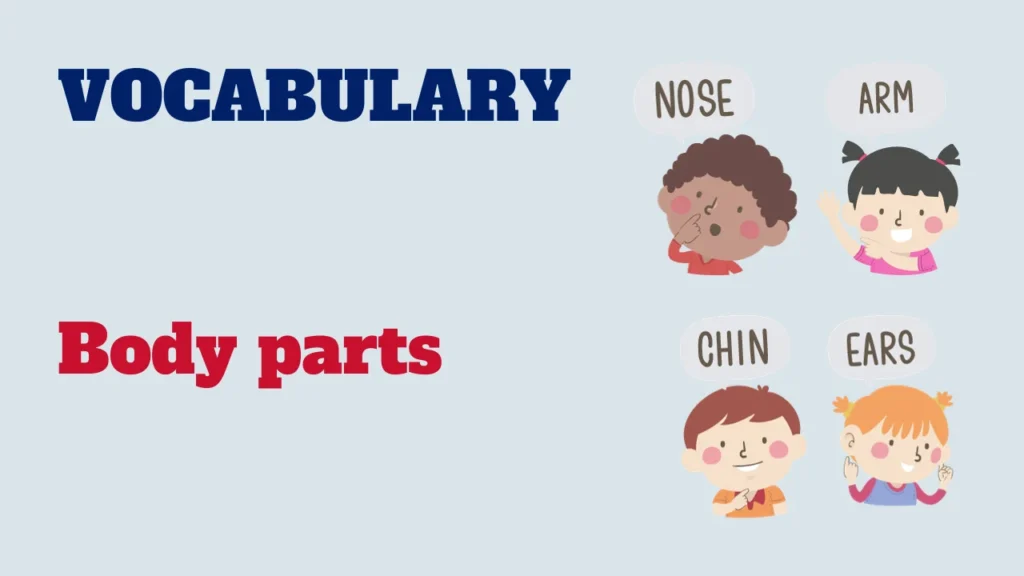Understanding body parts is essential for describing sensations, injuries, and everyday activities.

In this lesson, we’ll explore the vocabulary associated with various parts of the human body.
Body parts vocabulary
- Head: The uppermost part of the body, containing the brain and sensory organs.
- Eyes: Organs of sight located on the face.
- Nose: The prominent facial feature responsible for smelling.
- Mouth: The opening in the face used for eating, speaking, and breathing.
- Ears: Organs of hearing located on the sides of the head.
- Neck: The part of the body connecting the head to the torso.
- Shoulder: The joint connecting the arm to the torso.
- Arm: The upper limb extending from the shoulder to the hand.
- Elbow: The joint between the upper and lower parts of the arm.
- Hand: The terminal part of the arm, consisting of the palm and fingers.
- Chest: The front of the body, enclosed by the ribs, containing the heart and lungs.
- Stomach: The organ in the abdomen that digests food.
- Leg: The lower limb extending from the hip to the foot.
- Knee: The joint between the thigh and the lower leg.
- Foot: The terminal part of the leg, containing the ankle and toes.
Congratulations on expanding your vocabulary related to body parts! Whether you’re discussing health, engaging in sports, or describing physical sensations, these words will prove invaluable. Practice using them in different contexts to enhance your communication skills. Stay tuned for more vocabulary lessons on our language-learning journey!
Learn English
Share this 👉 https://quickglish.net/zbwc



